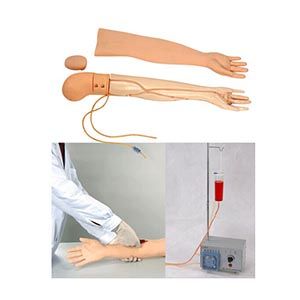
Venipunction and infusion are essential basic skills in medical care, which require high precision operation ability and psychological quality of medical staff. However, for beginners, this process is often accompanied by nervousness and unease, especially when dealing with real patients. In recent years, venipunction infusion arm model, as an advanced teaching tool, has gradually become an important help in medical education, which has performed well in improving learning efficiency and reducing operational errors. So, does this model really help beginners to quickly master the skills? The following will be explored from market trends, case studies and professional perspectives.
Market demand driven: the popularity trend of venipuncture models
With the continuous improvement of practical skills in medical education, the market of simulation teaching equipment shows a rapid growth trend. According to statistics, the global medical simulation equipment market has an average annual growth rate of 13%, of which venipentesis model is one of the most demanding segments. Behind this trend is a shift in the mode of clinical skills training.
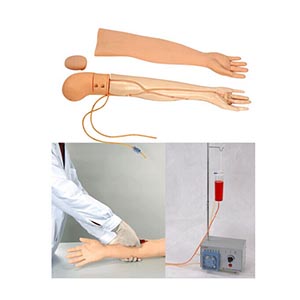
Venipuncture infusion arm model
Traditional teaching methods usually rely on the combination of theoretical explanation and direct practice, but due to the limited teaching resources, students often lack enough hands-on opportunities. The venipuncturing and infusion arm model provides students with a high frequency and low pressure training environment through simulation technology, which can improve their skills in a short time and meet the contemporary teaching needs.
Case study: Practical application of the model to beginners
A medical school introduced a full-function venipentesis infusion arm model in the nursing curriculum and conducted a follow-up study on the learning outcomes of beginners. The results showed that 85% of the students who trained with the model mastered the correct piercing method within two weeks, which improved the learning efficiency by 30% compared to traditional teaching.
Student Li Ming (pseudonym) shared his learning experience: "When I first started practicing, I was always worried that mistakes would hurt patients. After using the model, I could practice over and over again, slowly finding the Angle and force of the needle, and gradually gained confidence." Through many trials in simulated environments, he not only mastered the technique, but also became more comfortable with real patients.
Technological Advantage: How can models help skills?
The venipuncture infusion arm model restores the real human touch and blood vessel structure through simulation material and intelligent design. Beginners can learn the following key skills through modeling:
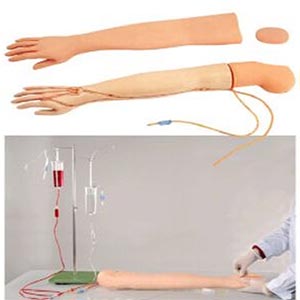
1. Vena cava positioning: The model is embedded with the vascular path, providing a palpable anatomical structure to help students quickly master the vascular positioning skills.
2. Puncture technique: Simulate the resistance of the skin and the feedback of the needle entering the blood vessel, so that students can feel the real operation experience.
3. Infusion operation: The model supports liquid flow, and students can practice the complete infusion process, including the steps of fixing the needle and connecting the infusion tube.
In addition, some high-end models are equipped with intelligent feedback systems that can monitor students' operating angles and forces in real time and provide suggestions for improvement. This instant feedback mechanism further improves learning efficiency.
Professional perspective: The teaching advantages of models
From an educator's point of view, the venipuncture infusion arm model not only reduces reliance on real patients, but also provides greater flexibility for course design. Traditional clinical practice is often limited by time and patient resources, and beginners have limited opportunities to practice. The model allows students to operate repeatedly in a risk-free environment, and this "error friendly" feature provides beginners with more room for trial and error.
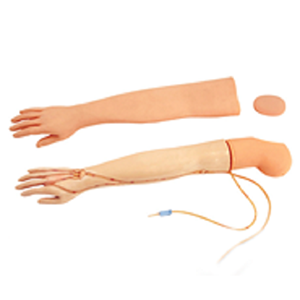
In addition, the model also facilitates the evaluation of teaching quality. By observing students' operation performance on the model, teachers can accurately judge their mastery level and give personalized guidance. This systematic training method has significantly improved the teaching effect.
Future outlook: The application value of model training
With the continuous innovation of medical technology and teaching model, venipuncture infusion arm model will play an increasingly important role. It is not only an ideal tool for beginners to learn skills, but also an important boost to the modernization of medical education. According to the data, the market demand for venipuncesis models with intelligent feedback function will increase by more than 50% in the next five years, which will further optimize the training effect and lay a solid practical foundation for more medical personnel.
Conclusion
The venipuncture infusion arm model is changing the way medical education is done thanks to its high simulation, repeatability and pedagogical friendliness. For beginners, it not only helps them to quickly master operational skills, but also enhances self-confidence and professionalism. With the continuous development of modeling technology, this tool will provide more medical students with a convenient and efficient way to learn, and train more outstanding talents for clinical nursing.


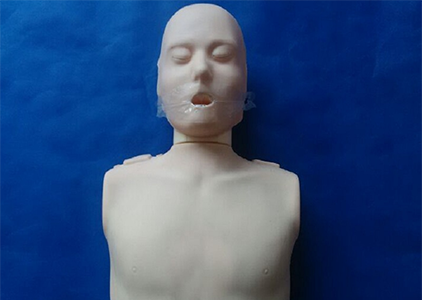




Sophie Asveld
February 14, 2019
Email is a crucial channel in any marketing mix, and never has this been truer than for today’s entrepreneur. Curious what to say.
Sophie Asveld
February 14, 2019
Email is a crucial channel in any marketing mix, and never has this been truer than for today’s entrepreneur. Curious what to say.